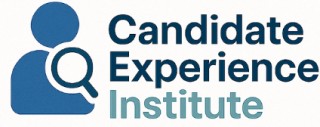
Understanding Favoritism in the Workplace
Defining Favoritism in the Office Environment
Favoritism in the workplace occurs when an employer or authority figure provides preferential treatment to certain employees over others. This favoritism may be based on personal relationships rather than job performance or credentials. Employees favored in this way can lead to a toxic work environment, affecting coworkers' morale and overall productivity. Favoritism can take many forms, including biased assignments or promotions, and may arise from factors like race, sexual orientation, or national origin. It's important to distinguish between lawful management discretion and unlawful favoritism. Employers can legally make some work-related decisions, but when favoritism crosses the line into illegal discrimination or harassment, it becomes a breach of employment laws. This can manifest through actions like age or race discrimination, or when employees feel targeted due to their gender or sexual orientation. Furthermore, favoritism often negatively impacts employee engagement. It can create a culture where those who are not favored feel discouraged or undervalued. This can result in diminished performance levels and a lack of trust in leadership. Understanding managed state compliance in background checks can help prevent biases and ensure employment practices abide by the law. It's essential for employers to foster a fair and equitable atmosphere where all employees have equal opportunities for advancement. For more on ensuring fair practices, see how understanding managed state compliance plays a crucial role here.Legal Implications of Favoritism
Understanding Favoritism: A Legal Perspective in the Work Environment
When it comes to favoritism in the workplace, the lines between acceptable corporate behavior and illegal preferential treatment can often blur. Favoritism, characterized by an employer giving preferential treatment to certain employees over others, can sometimes morph into illegal discrimination if it involves aspects like race color, sexual orientation, or national origin. Understanding the difference between favoritism and unlawful actions is crucial for both employees and employers.Favoritism is not illegal per se in many jurisdictions, but it becomes a legal concern when it infringes on employee rights protected by employment laws. When favoritism is based on attributes like age, gender, or sexual orientation, it may fall under the scope of illegal discrimination. For instance, if an employee is consistently passed over for promotions or choice assignments due to their race color rather than their job performance, this could potentially constitute discrimination.
In the employment context, it's important to know that discrimination claims can arise under various laws, including federal and state statutes. The United States' Equal Employment Opportunity Commission (EEOC) enforces laws against workplace discrimination and warns employers about the illegal nature of any discriminatory acts, including those masquerading as favoritism. While some forms of workplace favoritism may not violate any laws, ethical concerns and the potential for indirect discrimination can challenge a positive work environment.
However, it's also important to recognize that not all favoritism is rooted in discrimination. For example, when an employer favors an employee due to family connections, this might be seen as unfair but not necessarily illegal under general guidelines.
Click here for more on understanding managed state compliance in background checks, which can shed light on adherence to employment laws and regulations.
By being informed on the legal boundaries of favoritism in the workplace, employees and employers can manage ethical work environments that not only comply with the law but also foster professionalism and fairness.
Impact on Candidate Experience
Consequences of Favoritism on Applicant Engagement
Favoritism in the workplace goes beyond mere inconvenience; it significantly affects the candidate experience, often leading to a negative perception of the company. When job seekers suspect that an organization operates on favoritism, their enthusiasm to join the team diminishes. Understanding how favoritism manifests and influences prospective employees is crucial for maintaining a fair and appealing recruitment process. One immediate impact of favoritism across the employment landscape is the erosion of trust. Candidates vying for promotions or new roles may perceive preferential treatment as an indication that they are likely to be overlooked, regardless of their qualifications or performance. This perception can deter high-caliber talent from applying or engaging deeply with the recruitment process. Moreover, favoritism often leads to employee dissatisfaction and increased turnover among those who feel marginalized. As highlighted by employment law, it may border on discrimination if the preference is based on race, color, sexual orientation, or age, among other factors. This has a ripple effect starting from hiring to long-term employment, where candidates may expect a hostile work environment or fear facing illegal employer practices. For businesses aiming to enhance their candidate experience, addressing favoritism is an ethical imperative. Ethical failures can tarnish an employer's brand, making it less attractive in a competitive job market. Candidates today are increasingly informed and discerning, aware that favoritism can lead to an exclusionary culture that affects their employment journey. For a more comprehensive understanding of how recruitment practices can align with fairness and legality, one might explore the considerations surrounding a sourcer's role in shaping the candidate experience.Recognizing Signs of Favoritism
Warning Signs: Is Favoritism Occurring?
Favoritism in the workplace can be detrimental to both individuals and the organization as a whole. Recognizing the signs of favoritism is crucial for employees to understand whether this issue is at play in their work environment. Here are some key indicators:- Unfair Promotion Practices: If certain employees are consistently chosen for promotions over equally qualified or more qualified colleagues, it may be a sign of favoritism at work.
- Assignment of Favorable Projects: When specific assignments that lead to greater visibility or advancement are frequently given to the same individuals, it could demonstrate preferential treatment.
- Lack of Transparency: In cases where decision-making processes are not transparent or openly communicated, it can lead to perceived or real favoritism.
- Exclusion from Opportunities: Employees who find themselves excluded from critical meetings, projects, or networking opportunities might be experiencing workplace favoritism.
Strategies to Address Favoritism
Addressing Favoritism in Your Organization
Ensuring fairness and equity in the workplace is crucial to fostering a positive environment where all employees can thrive. Here are some strategies to tackle favoritism effectively:- Implement Clear Policies: Having clear policies against favoritism helps in establishing a level playing field. Employers should ensure that these policies are communicated to all employees and are part of the general employment guidelines.
- Provide Training and Education: Regular training sessions on recognizing and preventing workplace favoritism can equip employees and management with the knowledge to identify illegal discrimination, sexual harassment, and other unethical behaviors.
- Encourage Open Communication: Building a culture where employees feel safe to voice concerns without fear of retaliation is vital. A transparent communication channel can help address issues of workplace favoritism and favoritism work swiftly.
- Set Objective Criteria for Promotions: Developing clear, merit-based criteria for assignments promotions reduces the likelihood of favoritism based on race color, sexual orientation, or national origin. This promotes fairness in employment opportunities.
- Monitor and Evaluate: Regularly reviewing employee evaluations and feedback can highlight patterns of preferential treatment. This proactive approach enables timely interventions to address any form of illegal employer practices.
- Seek External Assistance: Engaging third-party auditors or consultants to assess workplace practices can provide an unbiased viewpoint on favoritism workplace challenges.













